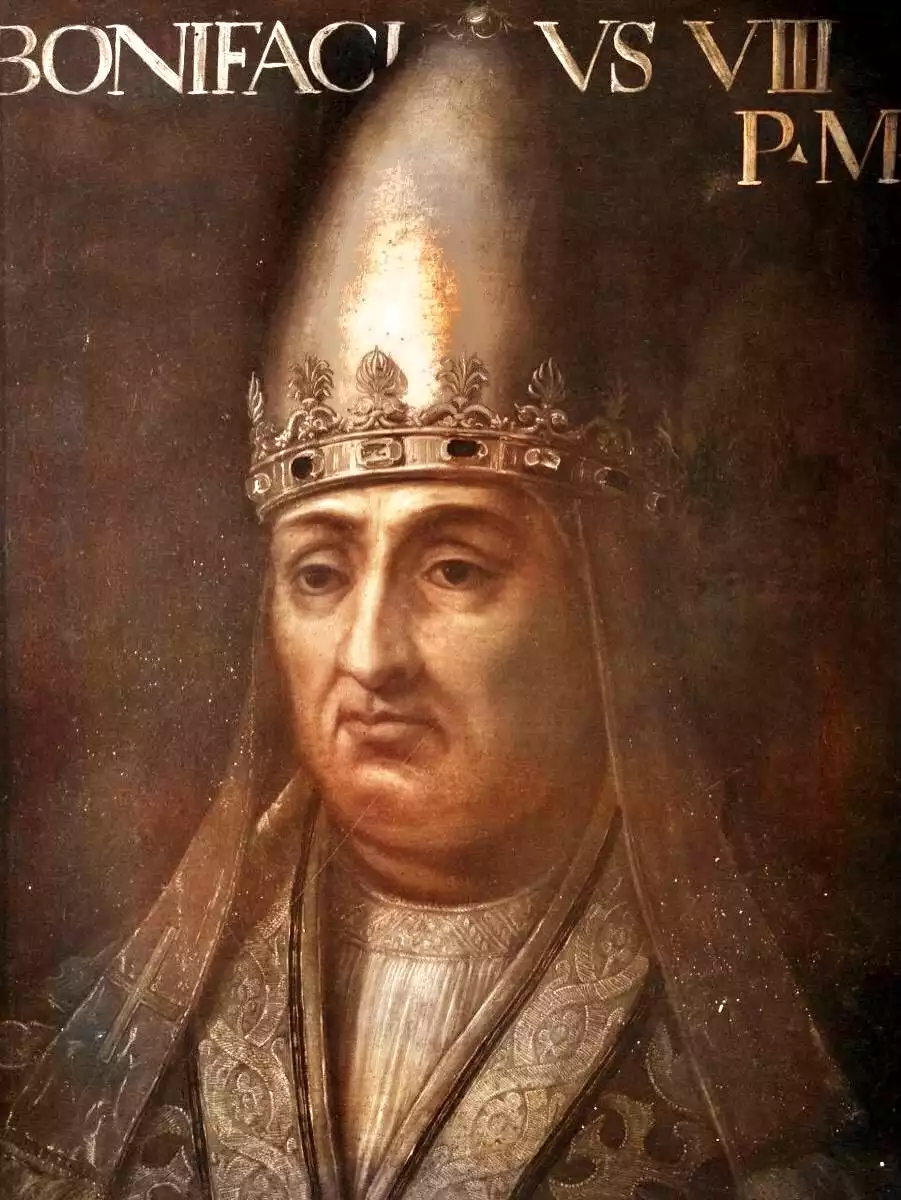
The papal bull, given the name “Unam Sanctam” and dated November 18, 1302, was authored by Pope Boniface VIII. It constitutes one of history’s most impactful papal documents, denoting a critical juncture in the balance of power between ecclesiastical and secular leaders. Through this edict, pontificating the supreme station of the Pope above both spiritual and temporal matters, tensions long brewing between the Papacy and monarchs, particularly France’s Philip IV, were exacerbated. The assertion of total papal supremacy, interwoven as it was with complex political dynamics of the time, intensified conflict between Boniface and Philip as well as reverberated over centuries, colored church-state relations since. By declaring “Utterly integral for salvation is each person’s subjugation unto the Roman Pontiff,” the bull encapsulated peak papal authority, shaping Christian theology and dealings between church and state moving forward.
The Context and Genesis of Unam Sanctam
Unam Sanctam emerged against a backdrop of mounting conflict between Pope Boniface VIII and King Philip IV. The French king’s assertive policies, aimed at expanding his authority, increasingly encroached upon the traditional prerogatives of the Church. This tug-of-war reached a zenith in 1296 with the promulgation of the Clericis Laicos, which prohibited the taxation of the clergy without papal approval. Philip IV’s retaliation, forbidding the export of funds from France to Rome, set the stage for a more profound confrontation.
The bull, Unam Sanctam, was not merely a theological statement; it was a bold assertion of papal supremacy in all matters, secular and spiritual. The document’s language, unequivocally declaring the necessity of being subject to the Roman Pontiff for salvation, was a direct challenge to secular rulers, particularly Philip IV. This audacious claim, rooted in the doctrine of papal infallibility and supremacy, was a significant escalation in the power struggle between the Papacy and the burgeoning nation-states of Europe.
The issuance of Unam Sanctam must be understood within the broader context of medieval power dynamics. It was a time when the concepts of nationhood and sovereignty were nascent, and the Church’s influence was all-pervasive. The bull’s impact extended far beyond its immediate political implications; it shaped the theological discourse of the time, reinforcing the central role of the Papacy in the spiritual life of Christendom.
The Legacy and Influence of Unam Sanctam
The reverberations of Unam Sanctam echoed throughout the centuries, profoundly influencing the relationship between church and state. Its immediate aftermath saw tensions escalate, culminating in the dramatic arrest of Pope Boniface VIII by the French king’s agents, an unprecedented act that symbolized the shifting power dynamics of the time. However, the long-term impact of the bull was even more significant. It became a cornerstone in the development of canon law and a reference point in discussions on papal authority and its limits.
The bull’s assertion of papal supremacy also played a crucial role in the evolving concept of national sovereignty. As European monarchies grew in power, they increasingly challenged the Church’s authority, laying the foundations for the modern nation-state. Unam Sanctam’s legacy can be seen in the gradual separation of church and state, a process that unfolded over centuries and shaped the political landscape of Europe.
The theological implications of Unam Sanctam were equally profound. The bull’s stark assertion of the necessity of submission to the Pope for salvation was a clear articulation of the medieval Church’s understanding of its role in the world. This doctrine would face challenges in the coming centuries, notably during the Reformation, as new theological perspectives emerged.
Unam Sanctam stands as a testament to a time when the lines between spiritual and temporal power were deeply intertwined. Its enduring legacy is not just in the historical narrative of Church-state relations, but also in its contribution to the theological and legal discourse within the Catholic Church. While the immediate political context of the bull has long passed, its influence continues to be felt in the ongoing dialogue about the role of religion in public life and the nature of authority.
References
Cushing, K. (2015). “Papacy and Law in the Gregorian Revolution: The Canonistic Work of Anselm of Lucca.” Oxford University Press.
Ganoczy, A. (1964). “Calvin: Théologien de l’Eglise et du ministère.” (Unam Sanctam 48). Paris: Editions du Cerf. Cambridge Core (Accessed 15 January 2024).
Oakley, F. (2003). “The Conciliarist Tradition: Constitutionalism in the Catholic Church 1300-1870.” Oxford University Press.
Pennington, K. (1993). “The Prince and the Law, 1200-1600: Sovereignty and Rights in the Western Legal Tradition.” University of California Press.
Tierney, B. (2004). “The Crisis of Church and State 1050-1300.” University of Toronto Press.
